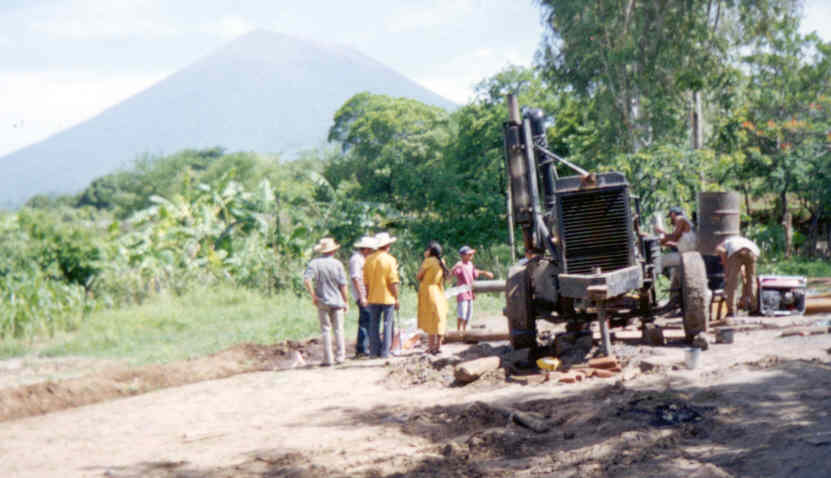

According to the World Bank, over one billion people in the world still lack access to safe water, nearly two billion lack safe sanitation, and more than three million people die every year from avoidable water-related diseases. Efficient sustainable water projects, especially in poor rural areas, are extremely difficult to achieve. Although this is a complex problem involving many factors, part of the problem can be attributed in many cases to poor management of these systems. With optimal management, deliverance of safe drinking water to rural households is more attainable.
Although a global problem, this report will focus on the small Central American country of El Salvador. El Salvador is one of the most densely populated countries on the continent, constantly battles with natural disasters, and is still recovering from a 12-year civil war which ended in 1992. The Pan American Health Organization estimates that only 29 % of the rural population, 82% of the urban population and 49% of the total population of El Salvador has access to potable water.
The Government of El Salvador (GOES) is currently considering how to modernize its water and sanitation sector (Activity Report 64). The national debate in El Salvador on the decentralization of water supply in El Salvador is a result of a general agreement throughout all sectors that the current system is not working (El Salvador 1). Currently ANDA (National Water and Sewage Administration) is overseeing all aspects of water deliverance and sanitation in El Salvador. Out of 262 municipalities in the country, ANDA operates water systems in 181 (Activity Report 65). Although in theory ANDA has been responsible for water supply in rural communities since 1996, ANDA does not have the resources or capability to manage these systems and so they are generally ignored. As a result, many rural areas lack water and have high water-related diseases.
In a recent report by the Environmental Health Project (EHP), five options for managing water supply systems were identified and analyzed. These options include continued administration by ANDA, administration by individual municipalities, administration by local organizations, administration by non-governmental organizations (NGO's), and administration private sector companies. Restructuring the state-controlled services is part of an overall decentralization effort after the signing of the Peace Accords in 1992. Other services such as energy generation and distribution, telecommunications, ports and the financial sector are undergoing similar processes. (El Salvador 1).
The advantage to ANDA administering rural water systems is that ANDA has access to more financial resources and trained personnel than most municipalities or rural communities. However, all profits go to the central government. In addition, ANDA runs the systems more expensively and concentrates its work in urban areas. Municipal systems have less access to funds and resources, but they tend to be less expensive to run. The drawback to municipal governments managing rural water supplies is that rural systems are generally not a priority for the municipality. For these reasons, the majority of existing rural systems are administered privately by local water boards, and funded by donations from governmental and non-governmental entities. In addition to difficulty in finding trained personnel to run these systems, rural water systems are generally not financially sustainable. When problems arise they are abandoned and there is no overseeing organization which the rural communities can turn to for support. Usually the cost to run these systems is high, and the fees are higher than they would be if run by the municipality. In this report I plan to explore different options for water supply in rural El Salvador.
Potential Sources for this Report:
|
Poverty and Water Supply Sanitation Services by Len Abrams |
|
|
Private Sector Engagement in the Water Supply and Sanitation Sector |
|
EHP Activity Report No. 65 (Decentralization in Central America) |